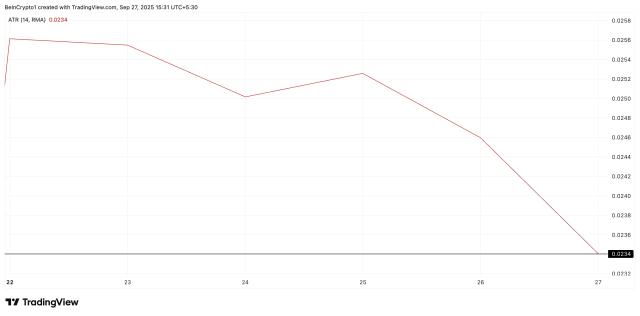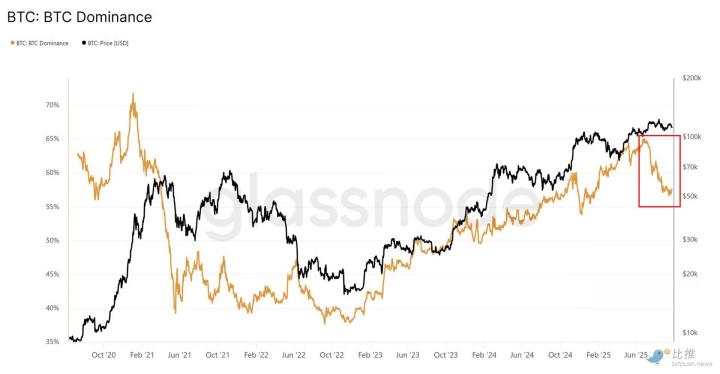Original Author: Miles Jennings, Head of Policy and General Counsel at a16z crypto
Original Translation: Luffy, Foresight News
The U.S. House of Representatives recently advanced an important new "market structure" bill with overwhelming bipartisan support (294 votes in favor, 134 against, with 78 Democrats supporting). The bill, known as the Digital Asset Market Clarity Act (House Bill 3633), will establish a clear regulatory framework for the digital asset market. The bill is now in the Senate for review, which is developing its own market structure legislation, with the CLARITY Act serving as a reference. If passed, the bill will establish clear "rules of the game" for blockchain systems, ending years of uncertainty that have stifled innovation, harmed consumer interests, and favored bad actors over entrepreneurs seeking transparency. Similar to how the 1933 Securities Act established investor protection mechanisms and drove capital formation in the United States for a century, the CLARITY Act has the potential to be a landmark law. When our legal framework can both promote innovation and protect consumers, the United States can lead the way, and the world can benefit. The CLARITY Act presents such an opportunity. Although the legislation builds on the bipartisan collaboration of last year's Financial Innovation and Technology for the 21st Century Act (FIT21), it has been improved in several key aspects, which will be elaborated below: what entrepreneurs need to know and why the bill is crucial for aligning innovation, consumer protection, and U.S. national security. Combined with the recently signed GENIUS Act (to be detailed later), the need for broader market structure legislation has become increasingly urgent. [The rest of the translation follows the same professional and accurate approach, maintaining the original meaning and tone while translating into clear, fluent English.]Exempt DeFi protocols and applications from the regulatory requirements established by the bill for digital commodity trading intermediaries (such as exchanges and brokers);
Establish standards for DeFi. To qualify, DeFi systems must not act as intermediaries, ensuring that specific DeFi systems do not reintroduce risks that regulations aim to mitigate.
Additionally, the bill will provide the necessary legal clarity for DeFi projects to:
Launch and sell their native tokens, which previously carried high and unclear risks;
Adopt decentralized governance without fear of being classified as centralized;
Provide self-custody services, with individuals now having a "right to self-custody".
CLARITY creates a fair competitive environment for DeFi projects. It also paves the way for integrating DeFi's advantages into the broader financial system, releasing its true potential to a wider consumer base.
However, the CLARITY Act is not perfect. It focuses solely on digital commodities, excluding other regulated digital assets like tokenized securities and derivatives. Moreover, while the CLARITY Act exempts DeFi systems from federal intermediary rules, it does not override state regulations, meaning the DeFi industry remains vulnerable to inconsistent or excessive state-level policies. These gaps should be addressed in the Senate, future legislation, or through coordinated regulatory guidance (such as rules from the SEC and CFTC).
Is the CLARITY Act Better Than the Current System?
Yes; the CLARITY Act improves the status quo for the following reasons:
Current lack of regulation: While some may argue that no regulation is better, the current regulatory uncertainty benefits bad actors and speculators who exploit this uncertainty to exploit consumers (not to mention unconstrained regulatory abuse). FTX is a typical example of these issues, damaging both the entire industry and thousands of consumers. Without timely action, we would open the door to more bad actors like the former FTX CEO.
Industry lack of transparency: Without mandatory disclosure and listing standards, consumers frequently face scams and fraud. This lack of transparency breeds a "casino" culture, giving rise to speculative products like meme coins.
Industry lack of protection: Without clear constraints on federal agency regulatory powers, blockchain projects (especially DeFi projects) still risk excessive regulatory intervention, which was common in previous administrations.
Industry lack of standards: Without standards around decentralization/control, consumers face unknown risks when using blockchain systems. For example, they might believe their assets (including stablecoins) are safe. However, if these blockchain systems are controlled by a single entity (which could potentially shut it down), assets may not be secure. As all industries mature, establishing standards becomes increasingly common.
How Does the CLARITY Act Compare to Previous Legislative Efforts (Like FIT21)?
The CLARITY Act actually incorporates lessons from FIT21 and improves upon it:
Enhanced transparency: Filling gaps in FIT21 that might have allowed traditional projects to circumvent disclosure requirements. The CLARITY Act provides a framework for applying disclosure obligations to ongoing traditional projects.
Strengthened consumer protection: Making it harder for insiders to profit from information asymmetry. For example, the CLARITY Act strictly limits project insiders from selling assets before the project matures (while still controlling the project).
More reasonable maturity framework: Adopting a control-based decentralization test, significantly improving FIT21's ambiguous approach. The framework is also more precise, as the CLARITY Act proposes seven objectively measurable standards for determining a blockchain system's maturity.
Improved regulatory oversight: Providing regulators with greater flexibility to ensure the regulatory framework evolves and expands with the industry's maturity.
How Does the CLARITY Act Relate to the Recently Passed GENIUS Act?
The newly passed GENIUS Act is a crucial step in modernizing the financial system. The House passed this significant legislation with overwhelming bipartisan support (308 votes in favor, 122 against, with 102 Democrats supporting), creating history. However, this new legislation about stablecoins greatly increases the need for broader market structure legislation like the CLARITY Act.
Why? Because the GENIUS Act will accelerate stablecoin adoption, driving more financial activities to the blockchain and increasing dependence on blockchain for widespread payment and commercial activities. This trend is already occurring as ubiquitous payment processors, traditional financial institutions, and mature payment networks increasingly accept and adopt stablecoins.
However, current stablecoin legislation does not regulate the blockchains these assets depend on, nor does it require these "channels" to be secure, decentralized, or governance-transparent. This gap exposes consumers and the broader economy to new systemic risks.
With the GENIUS Act signed into law, the need for the CLARITY Act becomes even more urgent.
The CLARITY Act provides necessary standards and oversight to ensure the infrastructure supporting stablecoins (underlying blockchains, protocols, and other tools) meets safety, transparency, and control standards. Its objective, measurable requirements for defining mature blockchain systems also give entrepreneurs clearer guidance on how to meet these standards.
Without these complementary protections, stablecoin adoption could accelerate the use of unregulated, opaque, or even hostile infrastructure. Through the CLARITY Act, ensuring stablecoins operate on secure networks further protects consumers, reduces financial risks, and reinforces the US dollar's strength and leadership in the next-generation financial system.
What Happens Next?
With the CLARITY Act passing the House of Representatives, the bill will be sent to the Senate. The Senate Banking and Agriculture Committees may review the bill,
modify it through their respective amendment procedures, and then submit it for a full Senate vote.
More likely, a bipartisan group of senators will propose a separate Senate version of a cryptocurrency market structure bill, which may be similar to the CLARITY Act in many aspects. The Senate Banking and Agriculture Committees will then review the bill through their procedures, and if approved, send it to a full Senate vote.
If Congress passes their respective bills, the House and Senate will need to reconcile any differences, either through informal negotiation procedures or a more formal conference committee, after which each chamber will vote on the final compromise version.
When might this happen? House and Senate leadership have set a target to send a market structure bill to the President for signature by the end of September.








